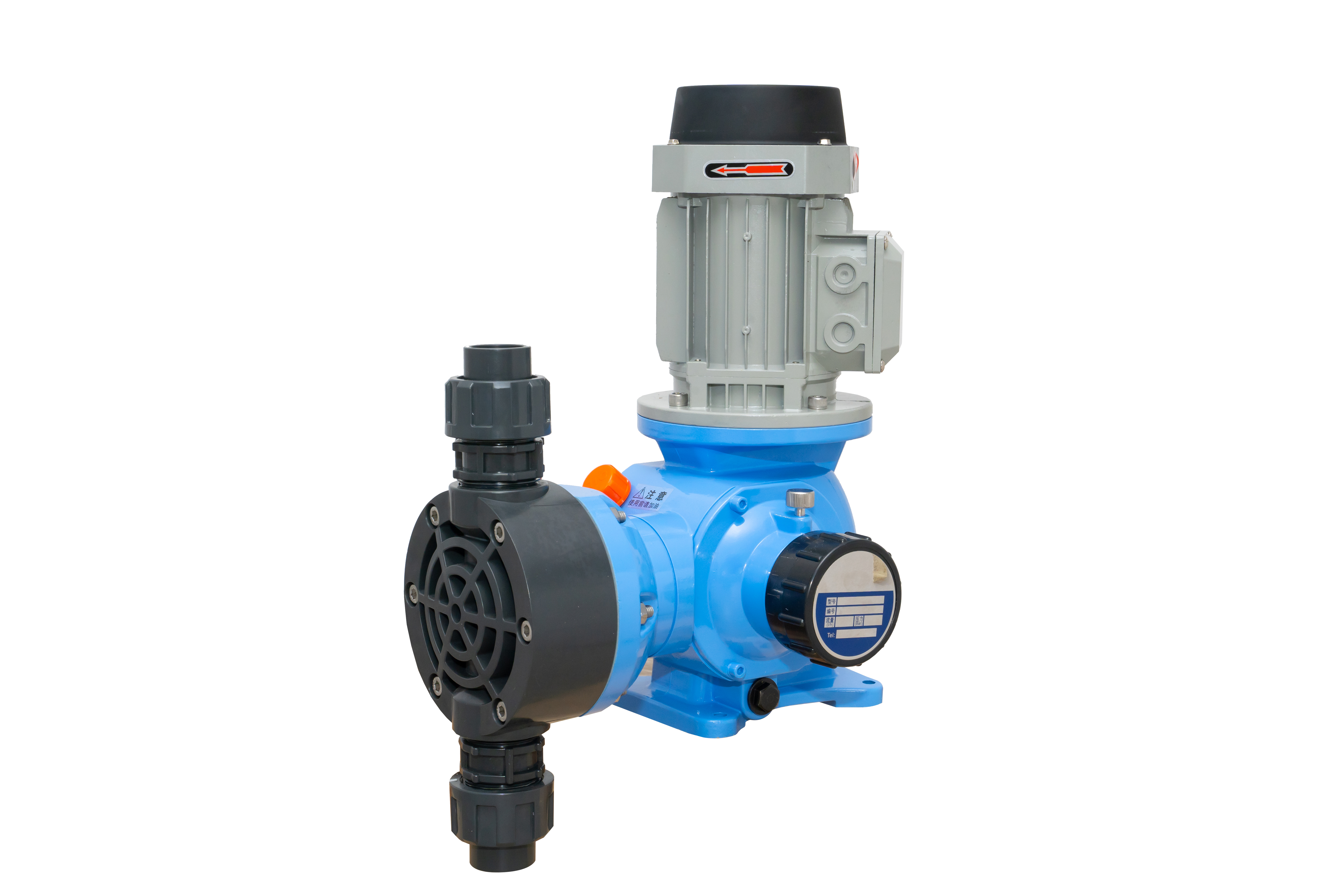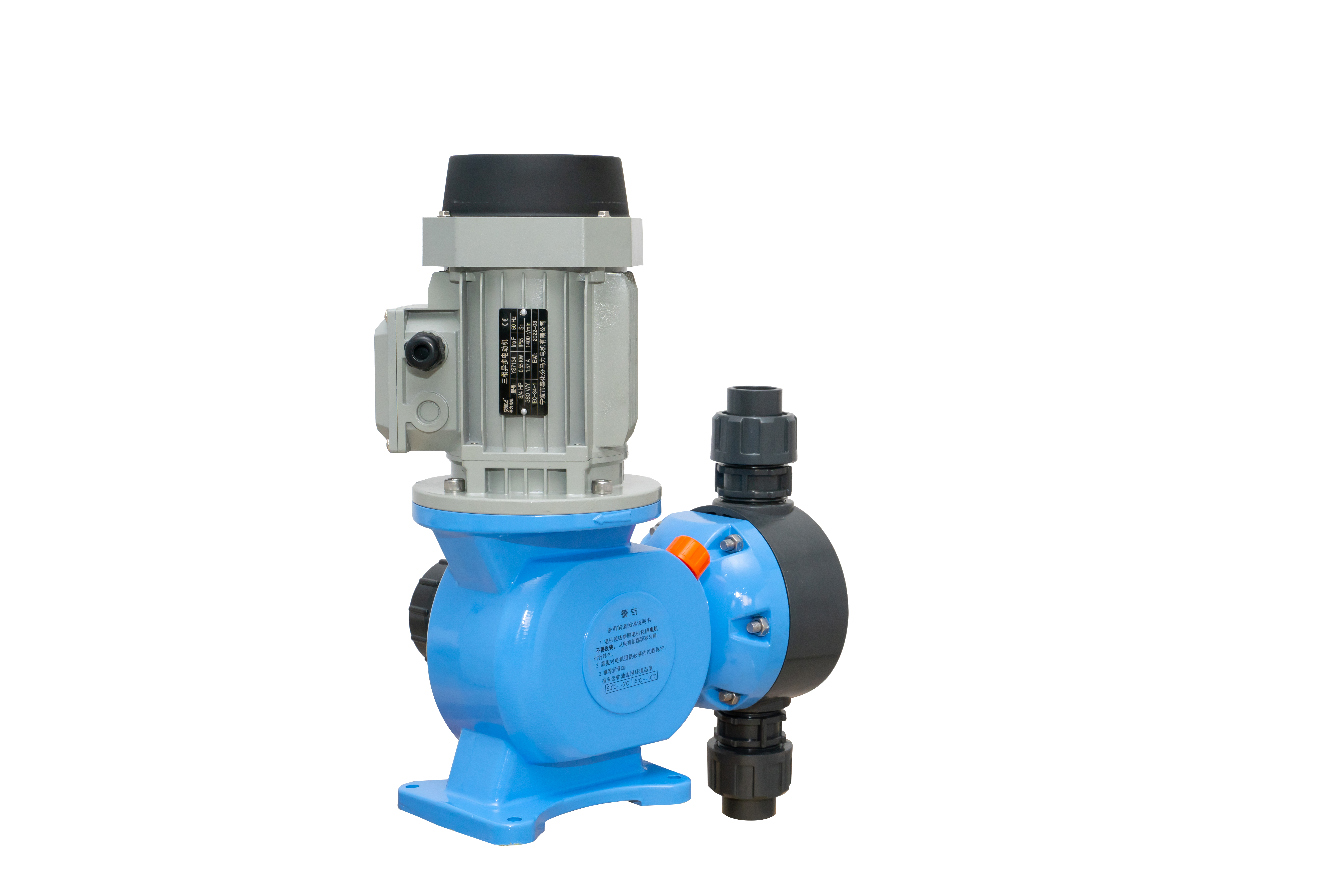- English
- Español
- Português
- русский
- Français
- 日本語
- Deutsch
- tiếng Việt
- Italiano
- Nederlands
- ภาษาไทย
- Polski
- 한국어
- Svenska
- magyar
- Malay
- বাংলা ভাষার
- Dansk
- Suomi
- हिन्दी
- Pilipino
- Türkçe
- Gaeilge
- العربية
- Indonesia
- Norsk
- تمل
- český
- ελληνικά
- український
- Javanese
- فارسی
- தமிழ்
- తెలుగు
- नेपाली
- Burmese
- български
- ລາວ
- Latine
- Қазақша
- Euskal
- Azərbaycan
- Slovenský jazyk
- Македонски
- Lietuvos
- Eesti Keel
- Română
- Slovenski
- मराठी
- Srpski језик
More Language
Cause-level treatment method of dosing pump without dosing
2022-06-20
(1) diaphragm failure
If the metering pump is not dosed or the dosage is insufficient, first check whether the one-way valve is blocked or whether the outer diaphragm fails. When checking, first remove the check valve body of the pump head, start the motor, adjust the plunger stroke, and observe whether there is any change in the motion amplitude of the diaphragm. If the motion amplitude of the diaphragm changes with the plunger stroke, it indicates that the diaphragm is in good condition.
(2) the outlet and inlet check valves are blocked.
Inject water into the one-way valve. If the water can't enter from the inlet or flow out from the outlet, it means that the one-way valve is blocked and needs cleaning. If water can flow in from the outlet and out from the inlet, it means that the check valve is installed upside down and needs to be adjusted.
(3) The feed check valve of the attached fuel tank is damaged.
When the pump works normally, the hydraulic cavity is filled with hydraulic oil. When the hydraulic oil in the cavity is insufficient, the hydraulic oil in the oil sump will make up the deficiency through the feed valve. If the valve is damaged, it will cause the diaphragm to stop moving or the operating range is not enough, thus causing the metering pump not to be dosed or under-dosed. Generally, there are three reasons for the failure of the feed check valve with oil tank: (1) the valve core and valve seat are not well matched; (2) Failure of valve body sealing ring; (3) The valve spring fails or its pre-tightening force is improper. The solution is to replace the corresponding parts.
(4) The setting value of safety relief valve is too low.
When the setting value of the safety relief valve is lower than the outlet pressure of the pump, the hydraulic oil between the hydraulic cavity and the oil sump will circulate in a short circuit, which will also cause the pump outlet flow to be insufficient or the pump will not be loaded. At this time, the pressure of the relief valve should be reset.
(5) The gearbox fails.
When the worm gear mechanism is damaged, the crankshaft system will be paralyzed, causing the pump to stop running and the metering pump without dosing.
2 Problems needing attention in maintenance
(1) exhaust
As the maintenance will cause gas residue in the medium chamber and hydraulic system, the residual gas should be completely discharged during the pump test, otherwise the system pressure will not be increased. For the residual gas in the medium chamber, the stroke of the metering pump should be increased first, so that the residual air can be discharged as soon as possible to reach the normal pressure. Then return the trip to normal. The air in the hydraulic system is discharged through the feed valve in the attached oil tank. When the diaphragm metering pump is running, press the valve stem of the feed valve , and the oil in the attached oil tank will enter the hydraulic system, and the air will be discharged upwards. Because of the high viscosity of hydraulic oil, this process takes a long time. If there is air in the safety relief valve (as shown in Figure 2), the pressure may not be raised, so it can be readjusted after removing the top screw to exhaust the air. Adjustment of safety relief valve
If the metering pump is not dosed or the dosage is insufficient, first check whether the one-way valve is blocked or whether the outer diaphragm fails. When checking, first remove the check valve body of the pump head, start the motor, adjust the plunger stroke, and observe whether there is any change in the motion amplitude of the diaphragm. If the motion amplitude of the diaphragm changes with the plunger stroke, it indicates that the diaphragm is in good condition.
(2) the outlet and inlet check valves are blocked.
Inject water into the one-way valve. If the water can't enter from the inlet or flow out from the outlet, it means that the one-way valve is blocked and needs cleaning. If water can flow in from the outlet and out from the inlet, it means that the check valve is installed upside down and needs to be adjusted.
(3) The feed check valve of the attached fuel tank is damaged.
When the pump works normally, the hydraulic cavity is filled with hydraulic oil. When the hydraulic oil in the cavity is insufficient, the hydraulic oil in the oil sump will make up the deficiency through the feed valve. If the valve is damaged, it will cause the diaphragm to stop moving or the operating range is not enough, thus causing the metering pump not to be dosed or under-dosed. Generally, there are three reasons for the failure of the feed check valve with oil tank: (1) the valve core and valve seat are not well matched; (2) Failure of valve body sealing ring; (3) The valve spring fails or its pre-tightening force is improper. The solution is to replace the corresponding parts.
(4) The setting value of safety relief valve is too low.
When the setting value of the safety relief valve is lower than the outlet pressure of the pump, the hydraulic oil between the hydraulic cavity and the oil sump will circulate in a short circuit, which will also cause the pump outlet flow to be insufficient or the pump will not be loaded. At this time, the pressure of the relief valve should be reset.
(5) The gearbox fails.
When the worm gear mechanism is damaged, the crankshaft system will be paralyzed, causing the pump to stop running and the metering pump without dosing.
2 Problems needing attention in maintenance
(1) exhaust
As the maintenance will cause gas residue in the medium chamber and hydraulic system, the residual gas should be completely discharged during the pump test, otherwise the system pressure will not be increased. For the residual gas in the medium chamber, the stroke of the metering pump should be increased first, so that the residual air can be discharged as soon as possible to reach the normal pressure. Then return the trip to normal. The air in the hydraulic system is discharged through the feed valve in the attached oil tank. When the diaphragm metering pump is running, press the valve stem of the feed valve , and the oil in the attached oil tank will enter the hydraulic system, and the air will be discharged upwards. Because of the high viscosity of hydraulic oil, this process takes a long time. If there is air in the safety relief valve (as shown in Figure 2), the pressure may not be raised, so it can be readjusted after removing the top screw to exhaust the air. Adjustment of safety relief valve
The safety relief valve can ensure the constant oil pressure in the hydraulic chamber, thus playing a protective role. If the set value of the safety relief valve is too large, the diaphragm and cylinder sealing ring will be damaged, thus affecting the life of the pump; If the setting value is too small, the pump will fail to pump or the pump will be insufficient. Therefore, it must work at the rated value.




